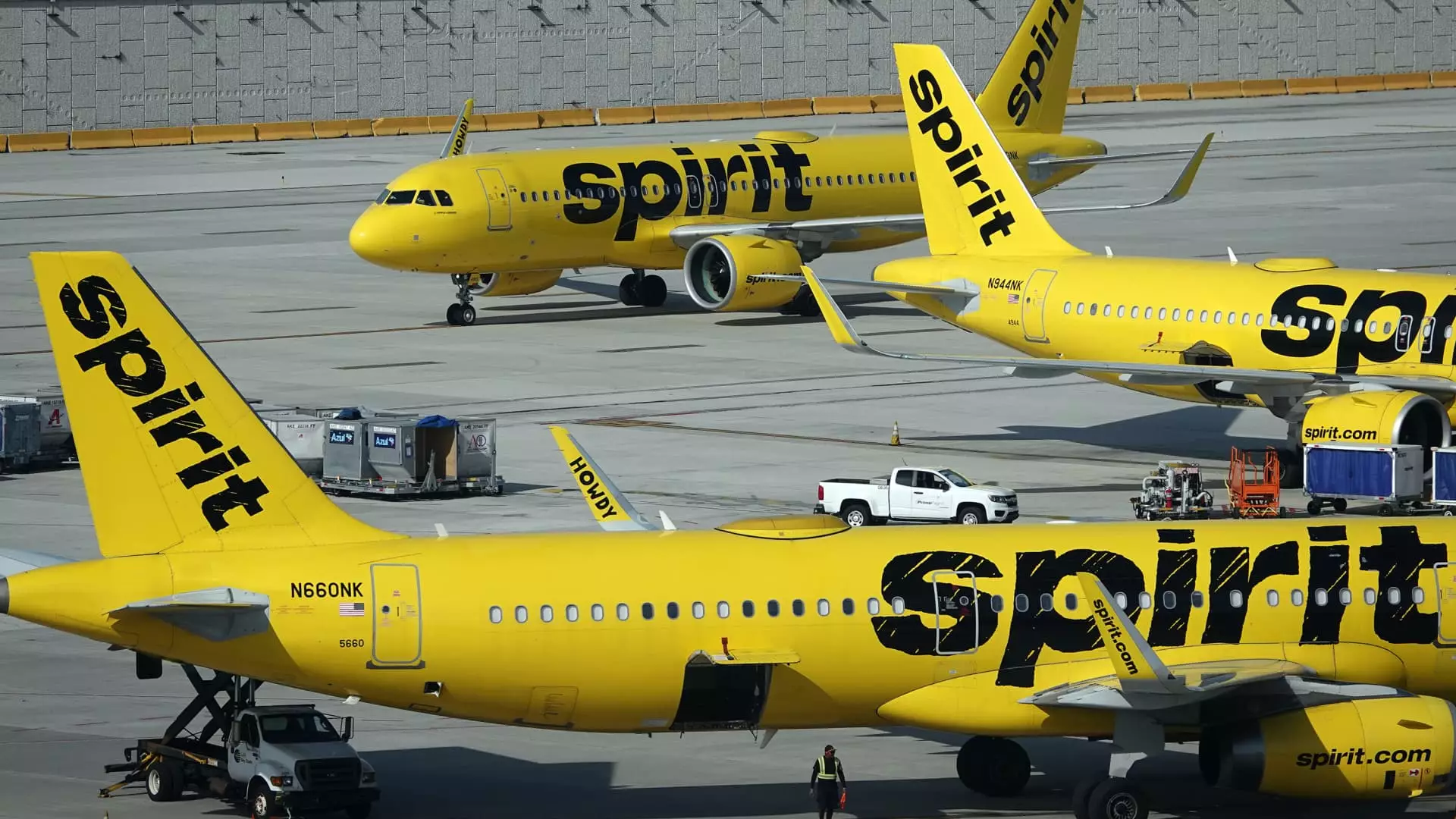On Friday, Spirit Airlines experienced a dramatic rebound in its stock market performance, witnessing a 16% increase to close at $2.79 per share. This surge followed the budget airline’s announcement of significant restructuring measures aimed at financial recovery. The airline’s aggressive pivot indicates a recognition of the urgent need to streamline operations and restore market confidence after a year characterized by tumultuous financial results.
One of the pivotal strategies outlined by Spirit Airlines involves the sale of 23 older Airbus aircraft, anticipated to generate approximately $519 million. This move not only emphasizes the airline’s need for liquidity but also signals a broader trend within the aviation industry, as companies jettison underperforming assets to bolster their financial health. Additionally, the company plans to implement cost reductions amounting to $80 million, primarily through workforce reductions. While the exact number of job cuts has yet to be disclosed, the timeline suggests a focused effort to trim excess operational expenses while recalibrating its workforce to match projected capacity needs.
Spirit Airlines’ financial woes are further complicated by its substantial debt load, exceeding $1 billion. The company has repeatedly postponed deadlines for refinancing this debt, with the latest extension pushing it to December. Such delays reflect the precarious position the airline finds itself in, grappling with a post-pandemic travel landscape that is rapidly changing. This is compounded by operational setbacks, including the grounding of numerous Pratt & Whitney-powered aircraft, which have contributed significantly to the airline’s struggles.
Despite the temporary stock rally on Friday, Spirit Airlines’ shares have plummeted more than 80% over the course of the year, primarily due to regulatory challenges that halted its proposed acquisition by JetBlue Airways. This scenario underlines the inherent volatility and competitive pressures in the airline sector. In an interesting turn of events, recent reports suggest renewed merger talks between Spirit and Frontier Airlines, hinting at potential consolidation maneuvers in response to ongoing financial pressures. This could mark a strategic shift for Spirit, offering a path toward increased market stability.
Looking ahead, Spirit Airlines projects a significant decline in its operational capacity for 2025, estimating a reduction in the mid-teens percentage range compared to 2023. Such adjustments are indicative of a strategic approach focused on sustainability over rapid expansion—a response to both current market conditions and a desire to recalibrate the airline’s operational capabilities. The decision to furlough around 200 pilots also underscores the depth of the adjustments being made to align labor resources with forecasted demand.
While Spirit Airlines’ recent measures have instigated a momentary upturn in its stock performance, the airline’s long-term viability hinges on its ability to navigate a complex financial landscape, adapt to shifting consumer demands, and possibly consolidate through strategic partnerships in an increasingly competitive market.

